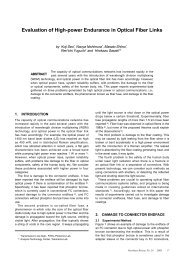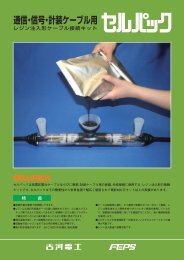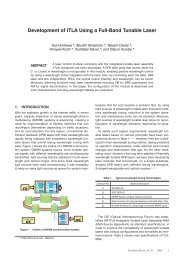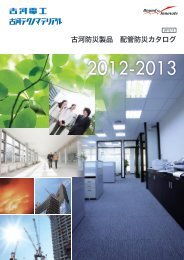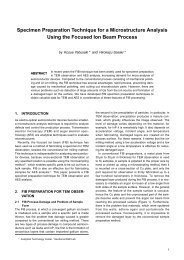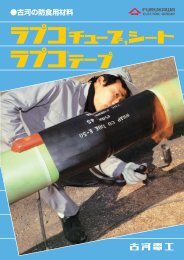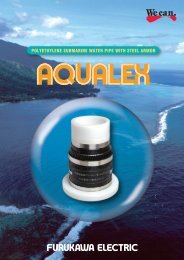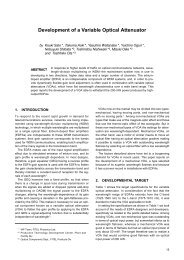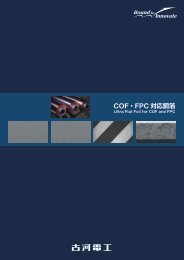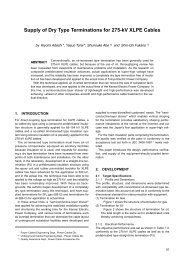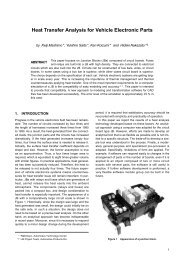Development Of Ultra-Thin Wall Welded Metal Pipe
Development Of Ultra-Thin Wall Welded Metal Pipe
Development Of Ultra-Thin Wall Welded Metal Pipe
Create successful ePaper yourself
Turn your PDF publications into a flip-book with our unique Google optimized e-Paper software.
the time of evaporation and condensation. When one end<br />
(high-temperature end) of a heatpipe containing a working<br />
fluid is heated, the working fluid vaporizes absorbing<br />
heat. The vaporized working fluid diffuses in the pipe to<br />
reach the other end (low-temperature end) to condense<br />
emitting latent heat there. In this way, heat is efficiently<br />
transferred from the high-temperature end to the lowtemperature<br />
end.<br />
At present heatpipes are extensively used in such applications<br />
as snow melting system using geothermal heat,<br />
temperature control in spacecraft, heat dissipation in electrical<br />
equipment, and home appliances. Because our corrugated<br />
pipes of stainless steel and copper possess, taking<br />
advantage of the manufacturing process in a completely<br />
inert gas environment in addition to continuous<br />
long-length welding, perfect air- and water-tightness as<br />
well as flexibility that make the pipes suitable for long distance<br />
piping, it is expected that the pipes find wide applications<br />
in the next-generation heatpipe systems.<br />
7. CONCLUSION<br />
In response to the weight reduction requirements including<br />
those from the automotive industry, we have developed<br />
the manufacturing technology for ultra-thin wall<br />
<strong>Development</strong> of <strong>Ultra</strong>-<strong>Thin</strong> <strong>Wall</strong> <strong>Welded</strong> <strong>Metal</strong> <strong>Pipe</strong> and Its Applications<br />
welded metal pipes that can endure, in spite of their<br />
reduced thickness, in severe secondary processes and<br />
application environments. By combining it with corrugation<br />
technology, the pipe manufacturing technology<br />
allows for making proposals for, and manufacturing of,<br />
next-generation commodities that can cope with environmental<br />
issues and energy conservation.<br />
REFERENCES<br />
1) Kazukiyo Kobayashi: Introduction to Welding Technology, 2nd edition,<br />
Rikogakusha Publisher (1999), 263. (in Japanese)<br />
2) Kenzo Kato; Journal of the Japan Society for Technology of<br />
Plasticity, 22 (1981), 1129. (in Japanese)<br />
3) Kenzo Kato; Journal of the Japan Society for Technology of<br />
Plasticity, 20 (1979), 859. (in Japanese)<br />
4) Kenzo Kato; Journal of the Japan Society for Technology of<br />
Plasticity, 23 (1982-8), 731. (in Japanese)<br />
5) Minoru Hasegawa: Mechanical Materials (4th edition), Rikogakusha<br />
Publisher (1993). (in Japanese)<br />
6) Yoshiro Siba: Journal of the Geothermal Research Society of Japan,<br />
27 (2005). (in Japanese)<br />
7) Geo-Heat Promotion Association of Japan: Brochure of Geo-Heat<br />
Promotion Association of Japan. (in Japanese)<br />
Furukawa Review, No. 32 2007 48





